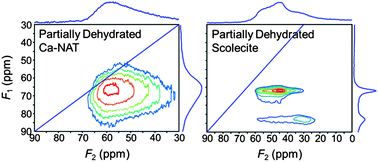Solid-state NMR study of various mono- and divalent cation forms of the natural zeolite natrolite†
Abstract
Here we present the one-dimensional 29Si and

* Corresponding authors
a
National Creative Research Initiative Center for Ordered Nanoporous Materials Synthesis, Department of Chemical Engineering and School of Environmental Science and Engineering, POSTECH, Pohang 790-784, Korea
E-mail:
sbhong@postech.ac.kr
Fax: +82-54-279-8299
Tel: +82-54-279-2284
b Laboratoire Catalyse et Spectrochimie, ENSICAEN, Université de CAEN, CNRS, 6 Bd. Maréchal Juin, 14050 Caen, France
Here we present the one-dimensional 29Si and

 Please wait while we load your content...
Something went wrong. Try again?
Please wait while we load your content...
Something went wrong. Try again?
M. B. Park, A. Vicente, C. Fernandez and S. B. Hong, Phys. Chem. Chem. Phys., 2013, 15, 7604 DOI: 10.1039/C3CP44421J
To request permission to reproduce material from this article, please go to the Copyright Clearance Center request page.
If you are an author contributing to an RSC publication, you do not need to request permission provided correct acknowledgement is given.
If you are the author of this article, you do not need to request permission to reproduce figures and diagrams provided correct acknowledgement is given. If you want to reproduce the whole article in a third-party publication (excluding your thesis/dissertation for which permission is not required) please go to the Copyright Clearance Center request page.
Read more about how to correctly acknowledge RSC content.
 Fetching data from CrossRef.
Fetching data from CrossRef.
This may take some time to load.
Loading related content
